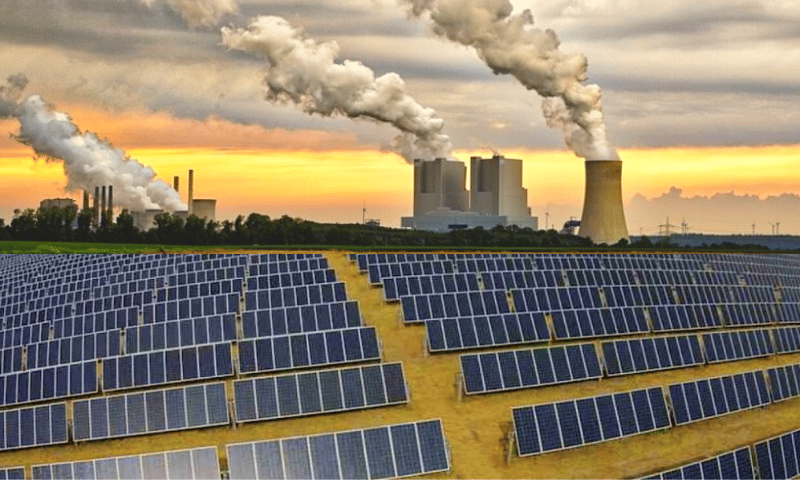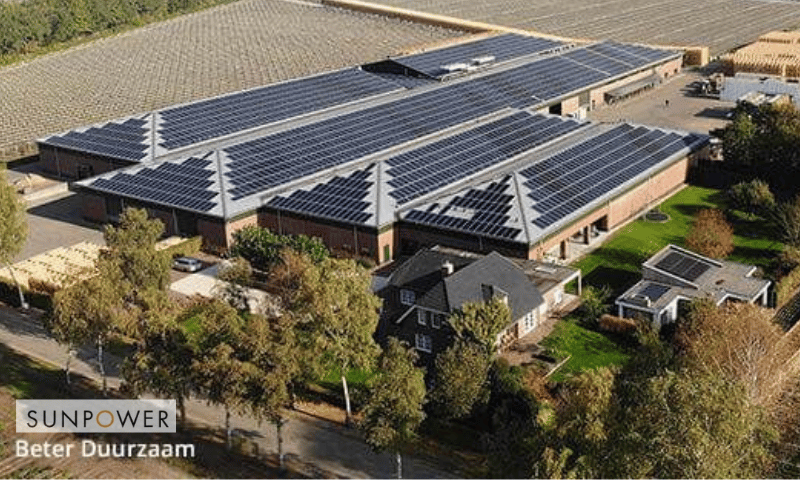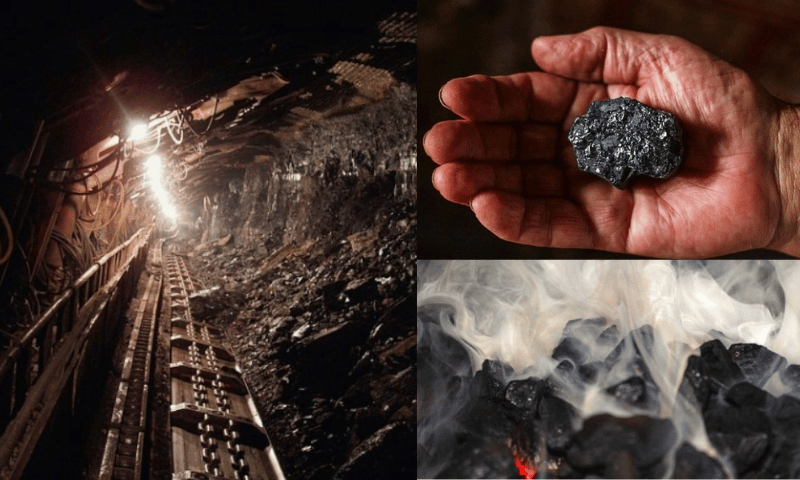
In this page
In the contemporary energy debate of fossil fuels vs renewable energy, coal and solar stand as significant, yet contrasting, sources of power. Coal, a time-tested fossil fuel, has powered industries for centuries, while solar power, harnessed from the sun’s rays, is the leader in renewable energy technologies. But which of the two is a better and more efficient choice?
“Efficiency” can mean various things. In energy generation, efficiency is about energy potential conversion, fuel density, and economic efficiency. Coal wins in the first two categories. However, if we analyse and compare the efficiency, environmental impact, and economic viability of coal and solar, solar power emerges as the overall winner.
Below, we explore in detail the reasons why. To help you better decide between the two energy sources, we will also look into the current situation of coal vs solar power in Australia, including the benefits they offer and the challenges they face in the country.
As we contemplate the evolving energy efficiency landscape, the spotlight on solar energy becomes increasingly relevant. If you’re considering the shift towards a more sustainable and economically viable future, Energy Matters provides a practical step forward.
Get FREE solar quotes to explore how solar energy can seamlessly integrate into your vision for a more efficient and environmentally friendly energy generation.
Coal vs solar: An overview
Coal power
Coal-fired power stations convert thermal energy from burning coal into electrical energy. This traditional method of power generation has been the backbone of global energy supply, playing a crucial role in industrial development.
However, its environmental effects and sustainability are increasingly under scrutiny. It is also a non-renewable energy, which means it takes millions of years to form.
Solar power
Solar power generation utilises photovoltaic (PV) cells to convert sunlight into electricity. It has seen a significant rise in adoption due to its declining costs and growing efficiency. This renewable energy – which means it is derived from natural sources that replenish at a faster rate than they are consumed, and is characterised by its ability to be used repeatedly without depletion – represents a key component in the transition towards cleaner energy.

Coal vs solar: A comparison
Efficiency in energy production
| Solar energy | Fossil fuels | |
| Efficiency rate | 15% to 22% | 20% to 40% |
| CO2 emissions | – | ✓ |
| Long-term availability | ✓ | – |
As a fossil fuel, coal has been a reliable energy source for years, providing consistent power regardless of time or weather conditions. This reliability stems from coal’s high energy density and the ability to control its combustion process, leading to energy generation efficiencies between 20% and 40%.
However, coal’s major drawbacks – which we will discuss later – include significant environmental pollution and the fact that it is a finite resource, which will eventually deplete.
On the other hand, solar power represents a clean, renewable energy source with minimal environmental impact. The efficiency of solar panels typically ranges from 15% to 22%, which is lower than coal. This efficiency rate is a measure of how much of the sunlight that hits the panels is converted into usable electricity.
But despite this lower efficiency in energy conversion, solar power’s environmental benefits – which we will discuss in the next section – and the fact that it harnesses an inexhaustible resource (sunlight) make it a more sustainable choice.
Additionally, technological innovations are continuously improving the efficiency and cost-effectiveness of solar panels.
Environmental impact
Coal causes substantial environmental degradation, starting from its extraction process up to its usage. The mining of coal leads to land degradation and water pollution, while the burning of coal for electricity generation releases large amounts of carbon dioxide and other harmful pollutants like sulphur dioxide and nitrogen oxides. These emissions contribute significantly to air pollution, climate change, and a variety of health problems.
Furthermore, coal-fired power stations have a significant environmental footprint, not only due to their emissions but also because they contribute to the exhaustion of a limited resource.
In contrast, solar power has a considerably lower environmental impact. Solar panels use sunlight to generate electricity without emitting greenhouse gases or other pollutants. Moreover, solar energy does not deplete natural resources and can be harnessed infinitely as long as the sun exists.
Despite some environmental costs associated with the manufacturing and disposal of solar panels, the overall environmental footprint of solar power is much smaller compared to coal.
Additionally, the advancement in solar technology and the decrease in solar panel costs have made solar power more accessible and a viable alternative to coal.

Economic viability
Coal-based power systems require substantial capital investment to establish large power plants and the associated infrastructure. These power plants are also often located far away from population centres, leading to energy transmission losses and higher costs for infrastructure development. Operational costs for coal power are also higher due to the expenses involved in coal mining, transportation, and maintenance of power plants.
Additionally, coal power systems are subject to fluctuating fuel prices and stringent environmental regulations, which can further escalate operational costs. And since coal power plants have a finite lifespan and face efficiency losses over time, they necessitate continuous investment in modernisation and compliance with environmental standards.
What’s more, coal mining can have social and health impacts on local communities, including displacement, pollution, and health issues for workers and nearby residents, further impacting its long-term viability.
On the other hand, solar power has witnessed a dramatic decrease in manufacturing costs over the past decade, leading to a significant reduction in capital expenditure. This cost-effectiveness is further enhanced by the minimal operating costs associated with solar energy, as once they’ve been installed, solar power systems generally require little maintenance and can generate electricity for decades.
Furthermore, solar power systems are decentralised, meaning they can be installed on rooftops, in remote areas, and even on mobile platforms, providing energy access to a wide range of locations, thereby facilitating widespread adoption and reducing the need for extensive transmission infrastructure. Solar energy can also potentially create local manufacturing, installation, and maintenance job opportunities, promoting local economic growth.
Coal vs solar power in Australia
Coal power: Current situation
Dominant but declining role: Coal-fired power stations have been a major source of electricity in Australia, supplying about 80% of the country’s power needs. However, the country’s reliance on coal is increasingly challenged due to environmental and economic factors.
Phasing out and replacement: There’s a gradual phasing out of coal power as Australia aims for net-zero emissions by 2050. This transition involves replacing coal with renewable energy sources, although there are concerns about meeting electricity demands and maintaining grid stability during this shift.
Coal power: The challenges
Environmental and economic challenges: Coal power faces significant challenges due to its environmental impact, including greenhouse gas emissions, and its increasing economic unviability compared to renewable sources. Australia’s commitment to reducing carbon emissions and meeting international climate goals necessitates a transition away from coal power. This shift is further accelerated by public awareness and demand for cleaner energy sources.
Resource depletion and import dependence: Coal, as a non-renewable resource, is subject to concerns over depletion. Australia, although rich in coal resources, faces the long-term prospect of these resources being exhausted. Additionally, the global nature of the coal market means that fluctuations and dependencies on imports can impact domestic energy security and economic stability.
Aging infrastructure and investment in upgrades: Much of Australia’s coal power infrastructure is aging, and there is a growing need for significant investment to upgrade these facilities.
However, given the shift towards renewable energy, there is a reluctance to invest heavily in coal power, leading to a gradual phasing out of older plants and a shift in investment priorities towards renewable technologies.
Market dynamics and renewable energy competition: The energy market in Australia is rapidly evolving, with renewable energy sources like solar and wind becoming increasingly cost-effective and efficient. This shift is driven not only by technological advancements and government policies but also by market forces as renewables become more economical. The competition from renewables is gradually diminishing coal power’s market share and economic viability.
To address this multitude of challenges, coal power systems in Australia can adopt various strategies, such as:
- Reduce emissions and pollution:
- Invest in advanced emissions control technologies.
- Ensure compliance with environmental regulations.
- Diversify fuel sources:
- Explore alternative fuel sources like renewable biomass or waste-derived fuels.
- Mitigate concerns about coal resource availability.
- Improve efficiency and reliability:
- Upgrade and modernize aging coal power plants.
- Reduce operational costs and extend lifespan.
- Enhance economic viability:
- Explore opportunities for carbon capture and storage (CCS).
- Repurpose coal power plants for hydrogen production or other applications.
- Achieve a sustainable energy mix:
- Collaborate with renewable energy sources like solar or wind power.
Power your home or business with the sunshine above and the wind at your back! Ditch the grid or off-grid and embrace clean energy independence with a customised solar + wind + battery storage system.
Energy Matters connects you with 3 FREE solar quotes from local, vetted installers, ensuring you get the perfect fit and the best price. Click today and unlock the future of energy!
Solar power: Current situation
Rapid growth and popularity: Solar power, particularly rooftop solar installations, is experiencing rapid growth in Australia, driven by the country’s abundant sunshine and supportive government policies.
Economic and environmental advantages: Solar power is increasingly recognised in Australia for its cost-effectiveness and lower environmental impact compared to coal. Technological advancements have significantly reduced the cost of solar PV technology, making it more affordable.
Solar power: The challenges
Grid integration and storage: Despite its growth, solar power faces challenges in grid integration and storage, particularly due to its intermittent nature. Integrating solar power into Australia’s existing energy grid presents technical and regulatory challenges. Issues such as grid stability, power quality, and grid connection requirements add complexity and cost to solar power system installations.
Moreover, the challenge of storing solar energy during times of low or no sunlight is critical. Current storage solutions, such as batteries, can be expensive and require further technological advancement to make solar power a more viable and reliable round-the-clock energy source.
Nevertheless, efforts are underway to improve energy storage solutions and integrate solar power more effectively into the national grid.
Intermittency and weather dependence: Solar energy production is inherently intermittent, relying heavily on the availability of sunlight. This means that solar power systems can face significant reductions in energy output during cloudy weather, shorter winter days, or when shaded by buildings or trees. This intermittency poses a challenge to ensuring a consistent and reliable energy supply in Australia, especially during peak demand periods or sudden weather changes.
Cost and economic feasibility: While the long-term benefits of solar power include reduced operational costs and energy savings, and despite the falling costs of solar panel technology in Australia, the initial installation of solar power systems can still be a huge investment. This high upfront cost can be a barrier to widespread adoption, particularly for low-income households or businesses with limited budgets.
Addressing these challenges will require a combination of technological innovation, supportive government policies, financial incentives, and collaborative efforts across various sectors in Australia. For example, manufacturers can improve the efficiency and durability of solar panels to mitigate the impact of intermittency, while government subsidies or feed-in tariffs can help lower the upfront costs of solar installations.
In conclusion, why is solar power superior to coal power?
While coal power continues to be a significant energy source due to its higher energy conversion rates and reliable supply, its environmental impact and long-term sustainability are major concerns.
Solar power, on the other hand, proves superior due to its environmental benefits, technological advancements, and long-term economic advantages. Shifting from coal to solar power and other renewable sources is a critical step towards a sustainable and environmentally responsible future.
In Australia, the transition from coal to solar power signifies a broader shift towards renewable energy, aligning with global trends in energy sustainability and carbon emission reduction. But while this is promising, it is crucial to note that the transition requires careful management to ensure energy reliability and accessibility across the country.
Energy Matters is committed to educating and raising awareness about the benefits of renewable energy. Our goal is to empower Australians to make informed choices about their energy use and help create a cleaner, brighter future for us all.
If you’d like to switch to renewable energy for more efficient and environment-friendly power generation, Energy Matters provides a practical step forward. Request FREE solar quotes now to explore how solar energy can seamlessly integrate into your vision.









































